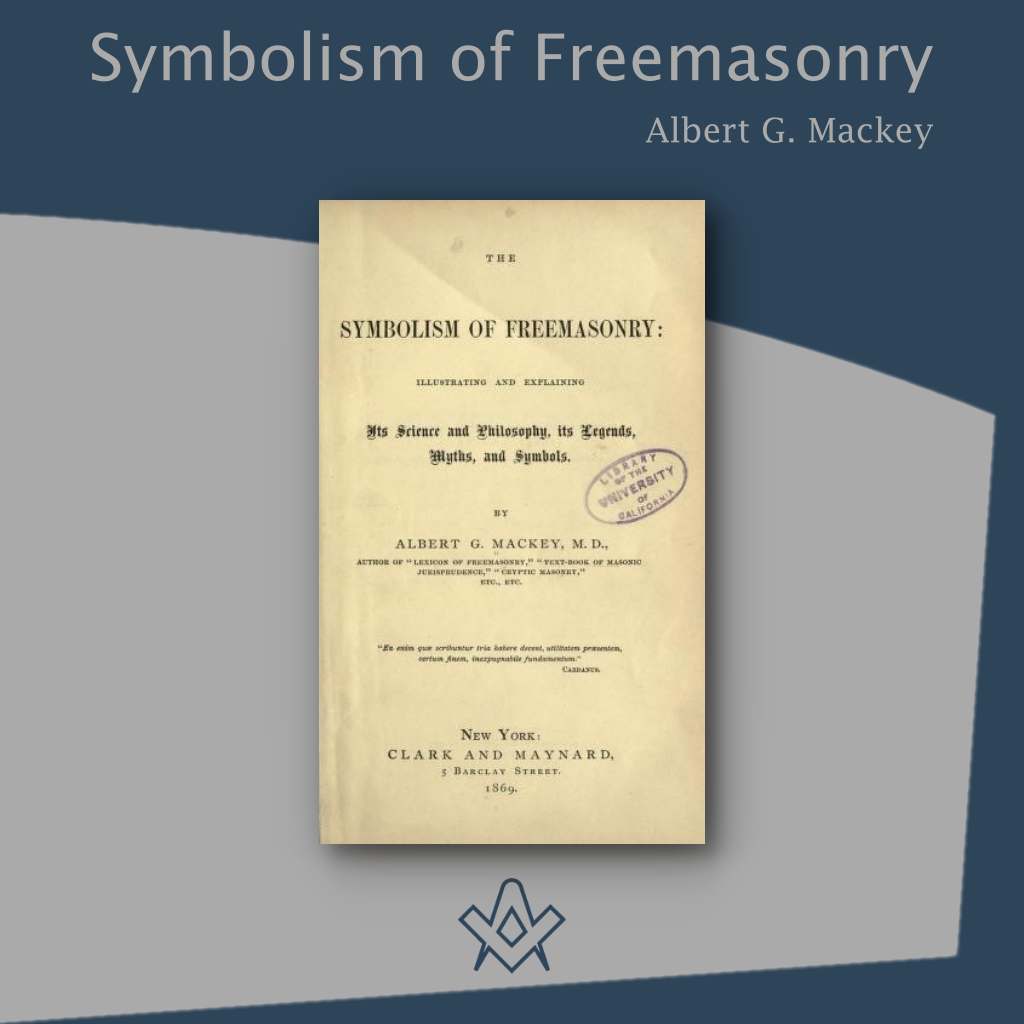The Symbolism of Freemasonry: Illustrating and Explaining Its Science and Philosophy, its Legends, Myths and Symbols.
– Albert G. Mackey, M.D.
Of the various modes of communicating instruction to the uninformed, the Masonic student is particularly interested in two; namely, the instruction by legends and that by symbols.
It is to these two, almost exclusively, that he is indebted for all that he knows, and for all that he can know, of the philosophic system which is taught in the institution.
All its mysteries and its dogmas, which constitute its philosophy, are intrusted for communication to the neophyte, sometimes to one, sometimes to the other of these two methods of instruction, and sometimes to both of them combined.
The Freemason has no way of reaching any of the esoteric teachings of the Order except through the medium of a legend or a symbol.
The object of the Masonic legends;
is not to establish historical facts,
but to convey philosophical doctrines.
A legend differs from an historical narrative only in this—that it is without documentary evidence of authenticity.
It is the offspring solely of tradition. Its details may be true in part or in whole. There may be no internal evidence to the contrary, or there may be internal evidence that they are altogether false.
But neither the possibility of truth in the one case, nor the certainty of falsehood in the other, can remove the traditional narrative from the class of legends.
It is a legend simply because it rests on no written foundation. It is oral, and therefore legendary.
In grave problems of history, such as the establishment of empires, the discovery and settlement of countries, or the rise and fall of dynasties, the knowledge of the truth or falsity of the legendary narrative will be of importance, because the value of history is impaired by the imputation of doubt.
But it is not so in Freemasonry. Here there need be no absolute question of the truth or falsity of the legend.
The object of the Masonic legends is not to establish historical facts, but to convey philosophical doctrines.
They are a method by which esoteric instruction is communicated, and the student accepts them with reference to nothing else except their positive use and meaning as developing Masonic dogmas.
Take, for instance, the Hiramic legend of the third degree.
Of what importance is it to the disciple of Masonry whether it be true or false?
All that he wants to know is its internal signification; and when he learns that it is intended to illustrate the doctrine of the immortality of the soul, he is content with that interpretation, and he does not deem it necessary, except as a matter of curious or antiquarian inquiry, to investigate its historical accuracy, or to reconcile any of its apparent contradictions.
So of the lost keystone; so of the second temple; so of the hidden ark: these are to him legendary narratives, which, like the casket, would be of no value were it not for the precious jewel contained within.
Each of these legends is the expression of a philosophical idea.
But there is another method of Masonic instruction, and that is by symbols.
No science is more ancient than that of symbolism. At one time, nearly all the learning of the world was conveyed in symbols.
And although modern philosophy now deals only in abstract propositions, Freemasonry still cleaves to the ancient method, and has preserved it in its primitive importance as a means of communicating knowledge.
According to the derivation of the word from the Greek, ‘to symbolize’ signifies ‘to compare one thing with another’.
Hence a symbol is the expression of an idea that has been derived from the comparison or contrast of some object with a moral conception or attribute.
Thus we say that the plumb is a symbol of rectitude of conduct. The physical qualities of the plumb are here compared or contrasted with the moral conception of virtue, or rectitude.
Then to the Speculative Mason it becomes, after he has been taught its symbolic meaning, the visible expression of the idea of moral uprightness.
But although there are these two modes of instruction in Freemasonry,—by legends and by symbols,—there really is no radical difference between the two methods.
The symbol is a visible, and the legend an audible representation of some contrasted idea—of some moral conception produced from a comparison.
Both the legend and the symbol relate to dogmas of a deep religious character; both of them convey moral sentiments in the same peculiar method, and both of them are designed by this method to illustrate the philosophy of Speculative Masonry.
To investigate the recondite meaning of these legends and symbols, and to elicit from them the moral and philosophical lessons which they were intended to teach, is to withdraw the veil with which ignorance and indifference seek to conceal the true philosophy of Freemasonry.
To study the symbolism of Masonry is the only way to investigate its philosophy.
This is the portal of its temple, through which alone we can gain access to the sacellum [small shrine] where its aporrheta are concealed.
Its philosophy is engaged in the consideration of propositions relating to God and man, to the present and the future life.
Its science is the symbolism by which these propositions are presented to the mind.
The work now offered to the public is an effort to develop and explain this philosophy and science.
It will show that there are in Freemasonry the germs of profound speculation.
If it does not interest the learned, it may instruct the ignorant. If so, I shall not regret the labor and research that have been bestowed upon its composition.
Article by: Albert G. Mackey
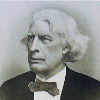
Albert Gallatin Mackey (1807 – 1881) was an American medical doctor and author.
He is best known for his books and articles about freemasonry, particularly the Masonic Landmarks.
In 1849 he established The Southern and Western Masonic Miscellany, a weekly masonic magazine.
He served as Grand Lecturer and Grand Secretary of The Grand Lodge of South Carolina, as well as Secretary General of the Supreme Council of the Ancient and Accepted Scottish Rite for the Southern Jurisdiction of the United States

Recent Articles: in this series
 Book Intro: The Secret Doctrine Explore the profound synthesis of science, religion, and philosophy in H.P. Blavatsky's "The Secret Doctrine." Discover the true depth of Theosophy beyond the oversimplified term "Esoteric Buddhism" and uncover the universal wisdom that transcends religious boundaries. A compelling introduction to Theosophical literature and its broader, esoteric truths. |
 Book Intro - The craftsman and freemason's guide Dive into the enigmatic world of Freemasonry with Cornelius Moore's comprehensive guide. Uncover the symbolic rituals, trace the fraternity's historical roots, and gain a deeper understanding of this age-old society. Perfect for Freemasons and curious readers alike. Unlock the secrets of Freemasonry today! |
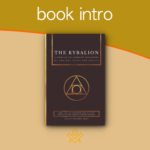 Unravel the secrets of the ancient Egyptian wisdom with our comprehensive guide to the Kybalion, by Three Initiates. Discover its influence on modern thought, the controversies surrounding it, and its seven profound Hermetic principles. Unlock the power of these timeless teachings to transform your understanding of life's mysteries. |
 Book Intro - The Working Tools of an Old York Master by Wilmshurst Unlock the Secrets of Freemasonry! Dive into the profound symbolism of 'The Working Tools of an Old York Master.' Discover the hidden meanings behind the square, compass, plumb line, and more. Embark on a transformative journey of personal growth and spiritual enlightenment. Uncover the ancient wisdom that has shaped generations of Masons. |
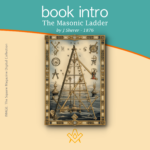 Book Intro - The Masonic Ladder by J Sherer Unlock the mysteries of Freemasonry with "The Masonic Ladder" by J. Sherer - - 1876. This 19th-century guidebook takes readers on a journey through the steps of the Masonic ladder, from the basic principles of the Entered Apprentice to the highest degree of the Sovereign Grand Inspector General. Discover the symbolism, allegory, and values of Freemasonry in this timeless classic. |
 Book Intro - The London mason in the seventeenth century The London Mason in the Seventeenth Century by Douglas Knoop offers a comprehensive examination of the lives and work of masons in the bustling city of London during the seventeenth century. The book delves into the intricacies of their craft, the socioeconomic and political forces that influenced their profession, and the role they played in shaping the architectural landscape of London. |
 Book Intro - History of Freemasonry, Gould, Robert Freke The History of Freemasonry is a comprehensive overview of the origins, development, and evolution of Freemasonry from its ancient roots to the modern era. The book explores the fascinating history of one of the oldest and most mysterious organisations in the world, which has been the subject of much speculation and curiosity over the centuries. - by Robert Freke Gould |
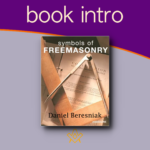 Book Intro - Daniel Beresniak Symbols Of Freemasonry This book is a collection of the symbolic images which Freemasons encounter on their journeys of transformation.' The texts and illustrations form an intimate dialogue whose subject is Freemasonry, and which casts light on the relationship between dreams and reality, reason, intuition and imagination. |
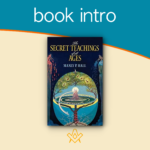 Book Intro - The Secret Teachings of All Ages by Manly P Hall The Secret Teachings of All Ages by Manly P Hall is a comprehensive and in-depth exploration of the various esoteric and occult traditions that have shaped human history. The book covers a wide range of subjects including alchemy, astrology, mysticism, and secret societies, and provides detailed explanations of the underlying principles and concepts. |
 Book Intro - Duncan's Masonic Ritual and Monitor Duncan's Masonic Ritual and Monitor is an impression of the Old York Rite published in New York in 1866. |
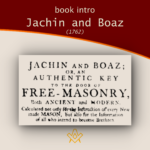 Book Intro - Jachin and Boaz (1762) Thirty two years after Samuel Prichard's Masonry Dissected (1730) a second detailed exposure was published Jachin and Boaz (1762) attributed to the same author, and met with equal distain by Freemasons of the time. However, these exposures offer the masonic historian an invaluable view in to how freemasonry was conducted during its early formation |
 Book Intro - Three Distinct Knocks (c.1760) Giving an exact account of all their proceedings in making a brother, with the three obligations or oaths belonging to the first second, and third degrees of masonry, viz. The entered apprentice, fellow-craft, and master-mason: with the obligating on belonging to the chair, and the grip and word. |
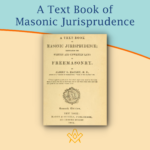 Book Intro - A Text Book of Masonic Jurisprudence An introduction to Albert Mackey's seminal work on Masonic Jurisprudence – the theory or philosophy of Masonic law. The Foundations of Masonic Law are to be found in the Landmarks, or Unwritten Law, and in the Ancient Constitutions, or the Written Law. These constitute the subject matter of the book. |
 Book Intro - The Perfect Ceremonies Of Craft Masonry 1871 A beautiful example of a the rituals, produced in a Medieval illuminated script style. Facsimiles still exist of this illustrated ritual book, of which the most authentically produced version is that available from the Scottish Rite Masonic Book Club. |
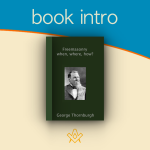 Book Intro – Freemasonry; when, where, how? Introduction to Freemasonry; when, where, how? By George Thornburgh |
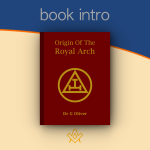 Book Intro - Origin Of The Royal Arch An introduction to the Origin of the Royal Arch, through the eyes of the English nineteenth century masonic author Dr G Oliver (1782–1867) |
 Book Intro – Symbolical Masonry Symbolical Masonry is a treasure-house of Masonic lore, including discussions of key concepts of the first three degrees, along with an extensive study guide. |
 This month we look at – 'A portrait gallery, with biographical sketches of prominent freemasons throughout the United States' |
 Extracted and abridged from The Mystic Tie: Or, Facts and Opinions, Illustrative of the Character and Tendency of Freemasonry By Albert Mackey, |
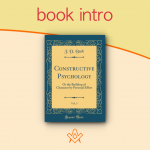 Book intro - Constructive Psychology The introduction to Constructive Psychology or The Building Of Character By Personal Effort by J D Buck a masonic author |
 book intro - Cagliostro: the splendour and misery of a master of magic Preface to the book by William Rutherford Hayes; Cagliostro: the splendour and misery of a master of magic |
 book intro - Origin of the Rosicrucians and the Free-Masons Historico-Critical Inquiry into the Origin of the Rosicrucians and the Free-Masons – Thomas De Quincey |
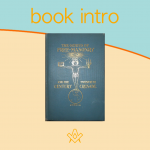 Book Intro - The Genius of Freemasonry The Genius of Freemasonry: “Has any brother anything to offer for the good of Masonry?” The following pages are the author’s answer to that question. |
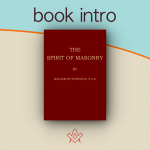 Book Intro - The Spirit of Masonry An essential source for anyone interested in exploring the inner mysteries of the Masonic Fraternity. |
 Book intro - History of Freemasonry Introduction to a classic masonic book by J. G. Findel, History of Freemasonry published 1866 |
 The Book of Constitutions for the Ancient Grand Lodge or Ahiman Rezon |
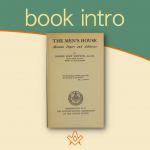 A short introduction to The Men's House, a collection of masonic papers and addresses |
 This is a general survey of Masonic origins, history and philosophy. It was at one time given to every new Mason in Iowa. |
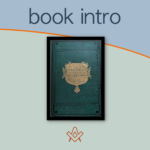 Book Intro - The Discrepancies of Freemasonry Written almost 150 years ago, this book contains wisdom still relevant today. |
 Book Intro - The Principles of Masonic Law "The first great duty, not only of every lodge, but of every Mason, is to see that the landmarks of the Order shall never be impaired". |
 Published in 1911, this fascinating book is equally relevant for the 21st century Mason with an interest in the more mystical side of Freemasonry. |
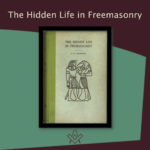 Book Intro - Hidden Life of Freemasonry Introduction to The Hidden Life in Freemasonry (1926) by Charles Webster Leadbeater |
 Book Intro - The Symbolism of Freemasonry Introduction to a classic masonic book; The Symbolism of Freemasonry: Illustrating and Explaining Its Science and Philosophy, its Legends, Myths and Symbols. |
 Book Intro - The Meaning of Masonry This is the Introduction to The Meaning of Masonry, a set of essays which discuss the esoteric side of Masonry |
 Book Intro - Illustrations of Masonry Introduction to Illustrations Of Masonry by William Preston (1742-1818) |
masonic knowledge
to be a better citizen of the world
share the square with two brothers

click image to open email app on mobile device



